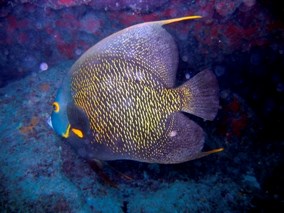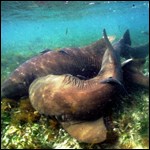
NPS photo by Douglas Morrison Dry Tortugas National Park is home to many historical and natural wonders above and below the water's surface. Teeming with life, this area has long been an inspiration to visitors, researchers, and adventurers. The park's coral reef and sea grass communities are among the most vibrant in the Florida Keys, providing habitat for myriad species of marine wildlife. The Sooty Tern finds its only regular nesting site in the entire United States on Bush Key, adjacent to Fort Jefferson. Large sea turtles lumber onto the park's protected beaches to bury their clutches of eggs. Patient visitors who are willing to get wet and go snorkeling will glimpse many species of reef fishes and other marine life beneath the surface of the water. Visit the links below to learn about some of the wildlife that inhabits the keys and waters of Dry Tortugas National Park. 
Kristen Hart, USGS Threatened and Endangered Species Learn which species in Dry Tortugas National Park are federally listed Threatened and Endangered Species. |
Last updated: May 16, 2017





